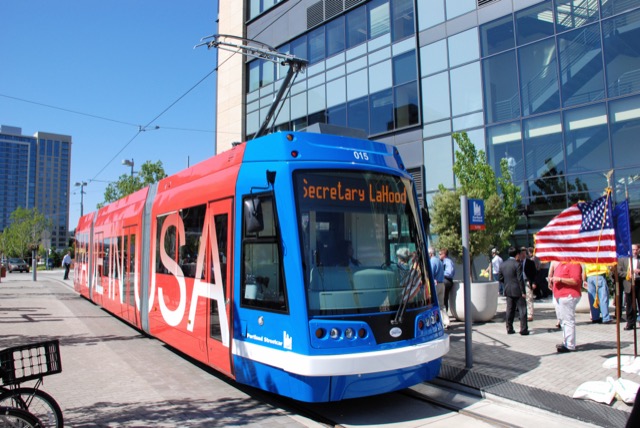The United Streetcar Company was supposed to create 300 full-time jobs and bring millions of dollars into the Oregon economy. Based on these promises, the company’s parent, Oregon Iron Works, lobbied hard to get a $4 million federal grant to build its first streetcar, which was an almost exact copy of streetcars that Portland had purchased from the Czech Republic for $1.9 million apiece. The Oregon congressman who earmarked the grant for the company confidently predicted that it would sell a billion dollars worth of streetcars to American cities in the next twenty years.

United Streetcar received $4 million to build this prototype car. The car never worked very well and fixing it cost another $3 million. Wikipedia photo by Steve Morgan.
The state of Oregon then put up $20 million in lottery money, which Portland used to order six new streetcars. Various problems forced the company to more-or-less arbitrarily reduce the order to five streetcars for the same price. “You’re not getting less,” gushed the company president unapologetically, “I actually think you’re getting more.” She later took a job as Deputy Assistant Secretary of Commerce for manufacturing, proving once again that it’s not what you know, it’s who you know.







